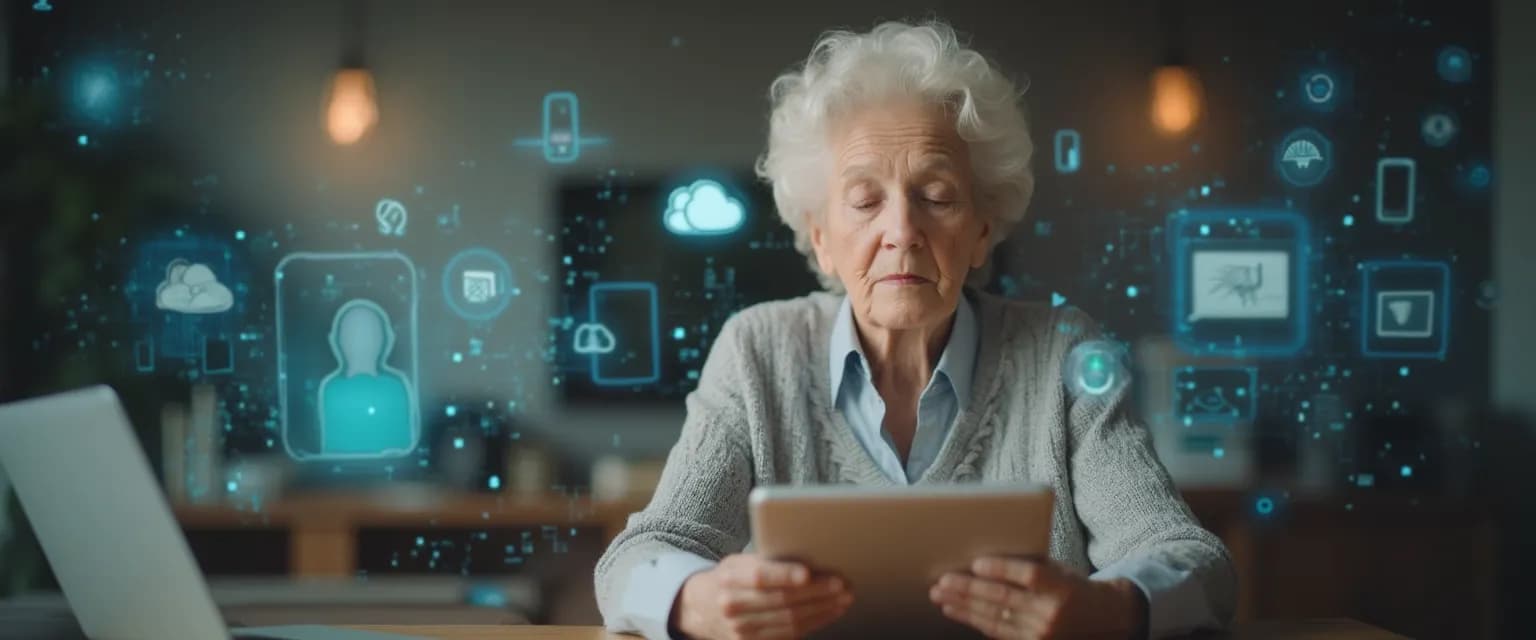Conquer Anxiety During Technological Adaptation: 5 Breathing Techniques for Seniors
Feeling your heart race when facing a new smartphone or computer? You're not alone. Anxiety during technological adaptation is a common experience, especially for older adults navigating today's rapidly evolving digital landscape. That flutter in your chest when trying to video call grandchildren or the frustration when an app doesn't behave as expected – these are normal responses to technological challenges. But they don't have to derail your learning journey.
For many seniors, anxiety during technological adaptation creates a genuine barrier to acquiring valuable digital skills. Your brain's stress response can actually impair learning and memory formation, making tech seem even more difficult than it actually is. The good news? Simple breathing techniques offer a powerful way to calm your nervous system and create the mental clarity needed for successful learning. Research shows that controlled breathing directly impacts your autonomic nervous system, reducing stress hormones and creating an ideal state for building confidence through small wins.
These five breathing techniques are specifically designed to address the unique challenges seniors face during technological adaptation. By incorporating them into your learning routine, you'll transform frustrating tech sessions into manageable, even enjoyable learning experiences.
5 Powerful Breathing Techniques to Ease Anxiety During Technological Adaptation
1. Box Breathing for Smartphone Navigation Stress
When complex smartphone menus leave you feeling lost, box breathing creates immediate calm. This technique is favored by Navy SEALs for high-pressure situations, making it perfect for anxiety during technological adaptation.
- Inhale slowly through your nose for 4 counts
- Hold your breath for 4 counts
- Exhale completely through your mouth for 4 counts
- Hold the empty breath for 4 counts
Practice this for 2-3 minutes before attempting to navigate challenging smartphone features. It reduces frustration and improves decision-making abilities.
2. 4-7-8 Breathing for App Installation Frustration
When downloading new applications triggers anxiety during technological adaptation, this technique rapidly induces relaxation by increasing oxygen flow.
- Inhale quietly through your nose for 4 seconds
- Hold your breath for 7 seconds
- Exhale completely through your mouth for 8 seconds, making a whooshing sound
This pattern slows your heart rate and creates mental space for processing new information, particularly useful when dealing with mentally cluttered tech procedures.
3. Diaphragmatic Breathing for Video Call Anxiety
Seeing yourself on screen while trying to connect with loved ones can trigger self-consciousness and anxiety during technological adaptation. Diaphragmatic breathing activates your body's relaxation response.
- Place one hand on your chest and another on your abdomen
- Breathe in slowly through your nose, feeling your abdomen (not chest) expand
- Exhale slowly through pursed lips
Practice for 5 minutes before video calls to reduce anxiety and increase on-screen confidence.
4. Alternate Nostril Breathing for Complex Feature Learning
When learning multi-step processes like cloud storage or password managers, this technique balances both brain hemispheres, reducing anxiety during technological adaptation.
- Close your right nostril with your right thumb and inhale through your left nostril
- Close your left nostril with your right ring finger, release your thumb, and exhale through your right nostril
- Inhale through your right nostril, then switch to exhale through the left
This creates mental clarity and improved focus when learning complex tech concepts.
5. Counting Breath for Password Management Stress
When managing multiple accounts and passwords becomes overwhelming, this simple technique grounds you:
- Inhale naturally
- Exhale slowly while mentally counting "one"
- Continue with each breath cycle, counting up to ten
- Return to one and repeat
This technique is particularly effective for resetting your stress response during frustrating technology moments.
Integrating Breathing Practices into Your Technological Adaptation Journey
To maximize the benefits of these breathing techniques for anxiety during technological adaptation, create a consistent pre-learning ritual. Before each tech session, take three minutes to practice your preferred breathing technique. This signals to your brain that you're entering a learning mode rather than a stress mode.
Pair your breathing with simple affirmations like "I learn at my own pace" or "I can master this step-by-step." This combination addresses both the physiological and psychological aspects of anxiety during technological adaptation.
Remember that different tech challenges may benefit from different breathing approaches. Use box breathing for navigation challenges, 4-7-8 breathing when feeling overwhelmed by new applications, and diaphragmatic breathing before social technology interactions.
Consistency builds neural pathways that automatically reduce anxiety during technological adaptation. With regular practice, you'll notice technology becoming less intimidating and more accessible. Your breathing techniques create a foundation of calm that supports effective learning, turning potential frustration into productive discovery.
By incorporating these five breathing techniques into your technology learning journey, you transform anxiety during technological adaptation into an opportunity for growth. Each calm breath creates space for new digital skills to develop, connecting you more confidently to our increasingly digital world.




